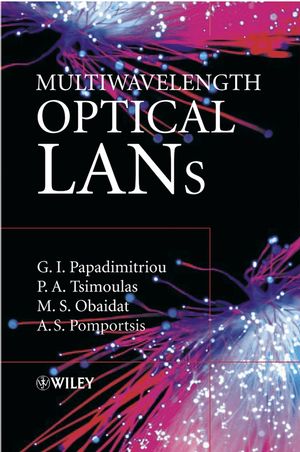Multiwavelength Optical LANsISBN: 978-0-470-85108-1
Hardcover
344 pages
November 2003
 |
||||||
This book extensively covers an important research area in
optical networking, enabling readers to fully understand the
concepts of optical LANs and learn details of architecture issues
and control protocols.
Through its careful focus on the local area, the book, covers the
major architectural, topological and protocol issues regarding
optical Local Area Networks (LANs) today. Considering that constant
advances on optical component technology make all-optical WDM LANs
all the more feasible for a wide commercial deployment, the book
investigates thoroughly the crucial latter topic, i.e. the
Media-Access Control (MAC) protocols that should be used. Besides
introducing a noteworthy part of the vast literature on such
protocols and providing some helpful distinguishing key protocol
characteristics, the book is also innovative in focusing on a
recent significant class of promising protocols whose operation is
based on network feedback information. In this way, these adaptive
protocols for optical LANs achieve an overall higher performance in
comparison with many other non-adaptive schemes.
Multiwavelength Optical LANs:
- Enables readers to understand the concepts of optical LANs and learn details of architecture issues and control protocols
- Focuses on the major architectural, topological and protocol issues regarding optical local area networks
- Presents the important class of adaptive protocols for optical LANs
No Optical systems/network developers, or engineers and scientists working in optical networking should be without this book. The well considered approach also makes this recommended reading for undergraduate and graduate computer science, computer, electrical and telecommunications engineering students.



